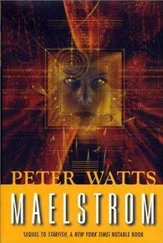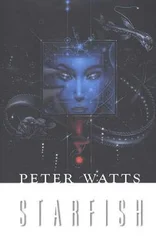One fascinating exception informs Keith Honeyborne’s report on “Prismatics,” who nearly drown themselves to achieve a heightened state of awareness. The premise of Ezequiel Morsella’s PRISM model [7] Ezequiel Morsella et al., “The Essence of Conscious Conflict: Subjective Effects of Sustaining Incompatible Intentions,” Emotion (Washington, D.C.) 9, no. 5 (October 2009): 717–728, doi:10.1037/a0017121.
, [8] E. Morsella, “The Function of Phenomenal States: Supramodular Interaction Theory,” Psychological Review 112, no. 4 (2005): 1000–1021.
is that consciousness originally evolved for the delightfully mundane purpose of mediating conflicting motor commands to the skeletal muscles. (I have to point out that exactly the same sort of conflict—the impulse to withdraw one’s hand from a painful stimulus, versus the knowledge that you’ll die if you act on that impulse—was exactly how the Bene Gesserit assessed whether Paul Atreides qualified as “Human” during their gom jabbar test in Frank Herbert’s Dune. )
Everything else comes down to tricks and glitches. The subliminal “gang signs” Valerie programmed onto the Crown ’s bulkheads seem a logical (if elaborate) extension of the newborn field of optogenetics. [9] Matthew W. Self and Pieter R. Roelfsema, “Optogenetics: Eye Movements at Light Speed,” Current Biology 22, no. 18 (September 25, 2012): R804–R806, doi:10.1016/j.cub.2012.07.039.
The “sensed presence” Dan Brüks and Lianna Lutterodt experienced in the attic results from a hack on the temporoparietal junction that screws up the brain’s body map [10] Shahar Arzy et al., “Induction of an Illusory Shadow Person,” Nature 443, no. 7109 (September 21, 2006): 287, doi:10.1038/443287a.
, [11] Michael A. Persinger and Sandra G. Tiller, “Case Report: A Prototypical Spontaneous ‘Sensed Presence’ of a Sentient Being and Concomitant Electroencephalographic Activity in the Clinical Laboratory,” Neurocase 14, no. 5 (2008): 425–430, doi:10.1080/13554790802406172.
(basically, the part of your brain that keeps track of your body parts gets kicked in the side and registers a duplicate set of body parts off-center). Sengupta’s induced misiphonia is a condition in which relatively innocuous sounds—a slurp, a hiccup—are enough to provoke violent rage. [12] Joyce Cohen, “For People with Misophonia, a Chomp or a Slurp May Cause Rage,” New York Times , June 9, 2011, http://www.nytimes.com/2011/09/06/health/06annoy.html .
All of this was inflicted in the service of education, though: as Brüks points out, fear promotes memory formation. [13] Rachel Jones, “Stress Brings Memories to the Fore,” PLoS Biol 8, no. 12 (December 21, 2010): e1001007, doi:10.1371/journal.pbio.1001007.
, [14] V. S. Ramachandran, The Tell-Tale Brain: a Neuroscientist’s Quest for What Makes Us Human (New York: W. W. Norton, 2012).
Fear and belief can also kill you, [15] Alexis C. Madrigal, “The Dark Side of the Placebo Effect: When Intense Belief Kills,” The Atlantic , September 14, 2011, http://www.theatlantic.com/health/archive/2011/09/the-dark-side-of-the-placebo-effect-when-intense-belief-kills/245065/ .
a trick used to good effect in certain religious practices. [16] Vilayanur S. Ramachandran and Sandra Blakeslee, Phantoms in the Brain (New York: Quill, 1999).
And in case you were wondering what was up with the fusiform gyrus there at the end (a couple of my beta readers did), it’s the structure containing the face-recognition circuitry [17] Mark Brown, “How the Brain Spots Faces—Wired Science,” Wired Science , January 10, 2012, http://www.wired.com/wiredscience/2012/01/brain-face-recognition/ .
we tweaked to amp up the mutual-agonism response in vampires. It’s part of the same circuitry that evolved to let us see faces in the clouds, involved—once again—in the evolution of our religious impulse (see below).
The brain’s habit of literalizing metaphors—the tendency to regard people as having “warmer” personalities when you happen to be holding a mug of coffee, the Bicamerals’ use of hand-washing to mitigate feelings of guilt and uncertainty—is also an established neurological fact. [18] Simon Lacey, Randall Stilla, and K. Sathian, “Metaphorically Feeling: Comprehending Textural Metaphors Activates Somatosensory Cortex,” Brain and Language 120, no. 3 (March 2012): 416–421, doi:10.1016/j.bandl.2011.12.016.
I pulled “induced thanoparorasis” out of my ass. It’s a cool idea, though, huh?
UNDEAD UPDATE
Back in Blindsight I laid out a fair bit of groundwork on the biology and evolution of vampires. I’m not going to revisit that here (you can check out FizerPharm’s stockholder presentation [19] FizerPharm, Inc. “Vampire Domestication: Taming Yesterday’s Nightmares for a Better Tomorrow,” 2055, http://www.rifters.com/blindsight/vampires.htm .
if you need a refresher), except for the citation in Blindsight implying that female vampires were impossible (the gene responsible for their obligate primatovory being located on the Y chromosome [20] Patricia Blanco-Arias, Carole A. Sargent, and Nabeel A. Affara, “A Comparative Analysis of the Pig, Mouse, and Human PCDHX Genes,” Mammalian Genome: Official Journal of the International Mammalian Genome Society 15, no. 4 (April 2004): 296–306, doi:10.1007/s00335-003-3034-9.
). More recent work by Cheberda et al have established a more general protocadherin dysfunction on both X and Y chromosomes, [21] Alexey Cheberda, Janna Randina, and J. Random, “Coincident Autapomorphies in the γ-PCDHX γ-PCDHY Gene Complexes, and Their Role in Vampire Hominovory,” Vampire Genetics and Epigenetics 24, no. 1 (2072): 435–460.
resolving this inadvertent paradox.
At any rate, zombies are more relevant to the current tale. Both surgical and viral varieties appear in Echopraxia ; the surgically induced military model is essentially the “p-zombie” favored by philosophers; [22] “Philosophical Zombie,” Wikipedia, the Free Encyclopedia , October 25, 2013, http://en.wikipedia.org/w/index.php?title=Philosophical_zombie&oldid=576098290 .
it already got a workout back in Blindsight . Examples of the viral model would include victims of the Pakistan pandemic: “civilian hordes reduced to walking brain stems by a few kilobytes of weaponized code drawn to the telltale biochemistry of conscious thought.”
What telltale signatures might these bugs be targeting? Consciousness appears to be largely a property of distributed activity—the synchronous firing of far-flung provinces of the brain [23] Giulio Tononi and Gerald M. Edelman, “Consciousness and Complexity,” Science 282, no. 5395 (December 4, 1998): 1846–1851, doi:10.1126/science.282.5395.1846.
, [24] Jaakko W. Långsjö et al., “Returning from Oblivion: Imaging the Neural Core of Consciousness,” The Journal of Neuroscience 32, no. 14 (April 4, 2012): 4935–4943, doi:10.1523/JNEUROSCI.4962-11.2012.
—but it is also correlated with specific locations and structures. [25] Navindra Persaud et al., “Awareness-related Activity in Prefrontal and Parietal Cortices in Blindsight Reflects More Than Superior Visual Performance,” NeuroImage 58, no. 2 (September 15, 2011): 605–611, doi:10.1016/j.neuroimage.2011.06.081.
In terms of specific cellular targets I’m thinking maybe “von Economo neurons” or VENs: disproportionately large, anomalously spindly, sparsely branched neurons that grow 50 to 200 percent larger than the human norm. [26] Franco Cauda et al., “Functional Anatomy of Cortical Areas Characterized by Von Economo Neurons,” Brain Structure and Function 218, no. 1 (January 29, 2012): 1–20, doi:10.1007/s00429-012-0382-9.
, [27] Caroline Williams, “The Cells That Make You Conscious,” New Scientist 215, no. 2874 (July 21, 2012): 32–35, doi:10.1016/S0262-4079(12)61884-3.
They aren’t numerous—they occupy only 1 percent of the anterior cingulate gyrus and the fronto-insular cortex—but they appear to be crucial to the conscious state.
Читать дальше








